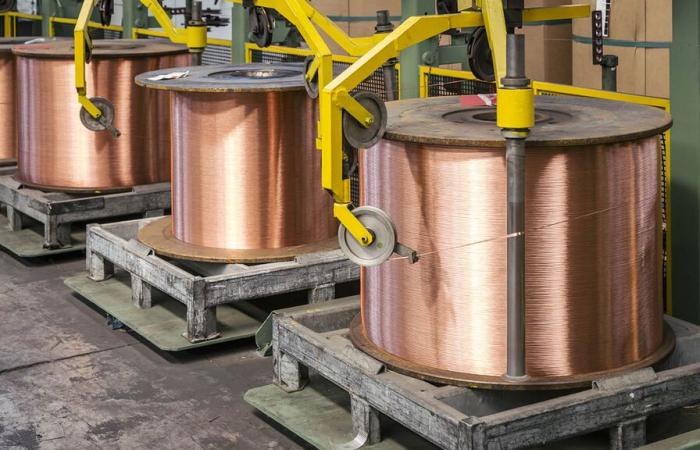A worrying observation, which propelled “depletion of mineral reserves» ranked fourth in the top 10 of the barometer of concerns of world mining leaders established by the firm for 2025. Because at the same time, the demand for copper – the king metal for conducting electricity – is increasing and could reach 41 million tonnes in 2050 compared to 25 million today. “There are around forty very large mines that we do not have, and which we need quickly because developing a copper asset takes on average 15 years.», Underlines the expert.
A price story
Be careful not to get alarmed too quickly! Firstly, the extent of the future increase in copper demand should be taken with a grain of salt. It depends both on the real pace of the energy transition and on the replacement and metal-saving technologies that will emerge. Then, the physical availability of copper is not threatened in the short or medium term. Despite the decline in discoveries, “since 1960, there has always been an average of 38 years of reserves [les ressources identifiées qui sont jugées économiquement exploitables] of copper,” underlines the International Copper Studies Group (ICSG), citing figures from the American Geological Survey.
«Mining resources are still abundant, which raises questions, it is above all the price which conditions the capacity to extract them», explains Moez Ajmi. Difficult financing, price volatility – a tonne of copper went from less than 8,500 dollars per tonne at the start of 2024 to nearly 11,000 in May and trading a little above 9,000 dollars in November – issues of social acceptance… Face to difficulties,large mining players often prefer to buy assets or develop their existing mines rather than build new ones, but the risk is that these deposits will become depleted», Judges the EY consultant.
Medium mines and extensions of the existing one
It is this strategy which explains the aborted attempt at the start of the year to buy AngloAmerican by the mining giant BHP. This prudent investment policy is identical to heavyweights in the red metal such as the American Freeport McMoran or the Chilean Codelco. Even more significant: miners who have first-hand deposits on hand – such as BHP with Oak Dam in Australia, or Glencore with Mara and El Pachon in Argentina – are waiting for prices to rise before launching exploitation.
«If we count all the copper mining projects today, it is possible to meet the estimated demand in 2035. But this will require prices to adjust», Judge Xavier Veillard, associate director in charge of energy and raw materials at McKinsey France. For the consulting firm, prices must reach $12,500 per tonne, to motivate the major projects planned for the decade in Chile (the world’s leading producer), but also in Russia, Pakistan, Indonesia, the Democratic Republic of Congo and Zambia. … This observation is reinforced by a recent note from the Australian investment bank Macquarie, which lists significant future extensions as well as a large number of medium-sized mine projects (between 50,000 and 150,000 tonnes per year) under development in the world.
Towards more recycling
Beyond the price and the deposits already identified, the option that new sources could reduce the risk of shortage cannot be ruled out. At the start of the year, the American start-up Kobold Metals – which prides itself on using new AI tools – announced a major discovery more than 1,500 meters under Zambian soil. In le New York Timesthe start-up specifies that the deposit would be “probably the largest discovery of copper in more than a decade” and should make it possible to produce at least 300,000 tonnes of copper per year. It has since raised more than $500 million to continue its work and is aiming to go into production before the end of the decade.
«Secondary deposits and our capacity to recycle more copper are also growing very strongly, with the dismantling of old telecom lines and buildings for example.», notes Xavier Veillard. McKinsey estimates that recycling (which contributes just over 4.5 million tonnes of copper per year today) should increase by 60% by 2035. A judgment shared by EY expert, Moez Ajmi who notes that “when mining managers are asked about the transformation of their operations in the short term, the number 1 topic is the integration of recycling into the value chain“. In France, the cable company Nexans started the trend, announcing at the end of October an investment of 90 million euros to be able to reuse 80,000 tonnes of used copper per year in its Lens foundry.






